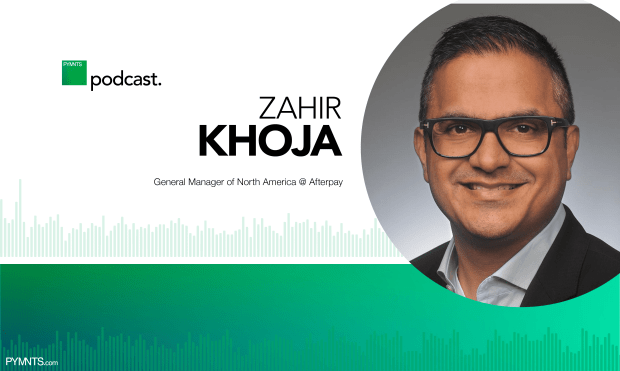Afterpay Eyes Home, Travel, Big-Box Retail For BNPL Growth

There is something of a generational shift happening when it comes to how consumers want to access and leverage credit.
The number of younger consumers carrying traditional rolling balance cards is on the decline. The May 2021 edition of PYMNTS Buy Now, Pay Later Tracker indicates that 21 percent of consumers don’t own credit cards in 2021, up sharply from the 14 percent who didn’t have them the year before.
That declining use-rate can be explained, Afterpay General Manager of North America Zahir Khoja told PYMNTS, by the growing aversion among millennial and Generation Z consumers to getting roped into revolving debt cycles and paying interest, and a strong preference to pay with their own money.
“They’re starting to say, ‘We want to use debit and our own money,’ but they still want the flexibility of being able to pay over time, which I think is afforded by buy now, pay later,” Khoja said.
Given the massive growth of buy now, pay later (BNPL) options in the U.S. and around the world, consumers are clearly thinking similarly. Afterpay alone has seen customer levels swell to over 17 million since its inception, and even so, Khoja said the BNPL-runway is still very long and offers huge opportunity to bring more consumers worldwide onboard.
Seeking Out the Specialty Players
What Afterpay has done well with specialty retailers in spaces such as fashion and beauty is focus on why businesses should want BNPL to begin with, he said. BNPL allows them to convert more consumers without running the risk of putting them into a negative position credit-wise. That means higher average order values, more conversions and increased incremental revenue and profit.
Customers win by expanding their buying power without risking hidden fees and interest charges, while merchants win new customers who are loyal and engaged while still getting their money right away and not taking on a lot of risk, he said.
“And there’s so much opportunity across so many verticals as we look at the horizon of what’s to come — kitchen and home, home furnishings, athletic equipment, travel tickets and everyday big box spend retailers,” he said. “I think at Afterpay, we’re just scratching the surface.”
As much as BNPL has grown and expanded in recent years, it also has plenty of room to grow. The latest tracker findings also suggest that there is more work to do to get the word out as roughly 11 percent of respondents still didn’t know what buy now, pay later solutions were.
What’s Next
That’s one reason why Afterpay has launched its latest marketing campaign with Rebel Wilson to help consumers better understand the difference between paying over time with one’s own money versus racking up fees on a credit card with interest.
It’s why the firm has rolled out its loyalty program to focus on rewarding consumers for good behavior and paying on time, versus dangerous behavior like the excessive spending that comes with credit cards. Khoja said BNPL runs best when it runs for both sides of the transaction — the merchant and the consumers. It is what has spurred Afterpay’s growth in specific over the last few years, and the massive growth in the segment in general.
Consumers have spoken, and what they want are newer, more transparent ways to pay over time, without risking penalty, he said.
“So, BNPL is really turning the paradigm on its head,” he said, “and incentivizing consumers to do things right and pushing them to spend their money in a very responsible way.”
